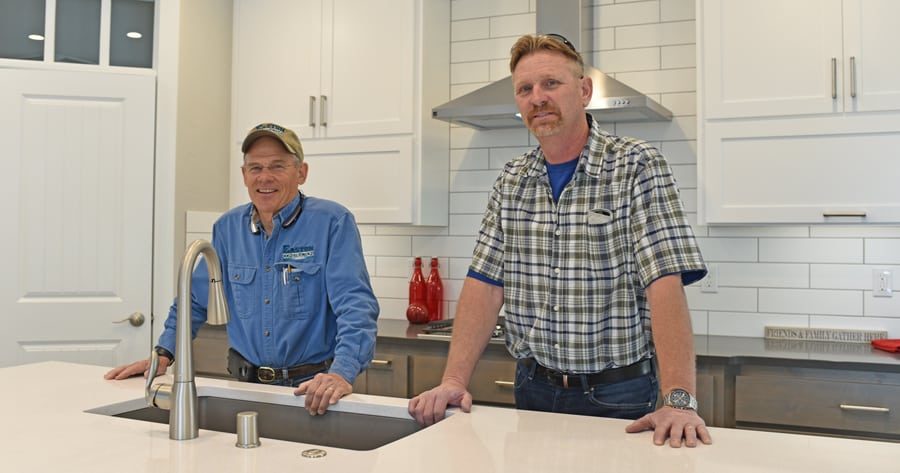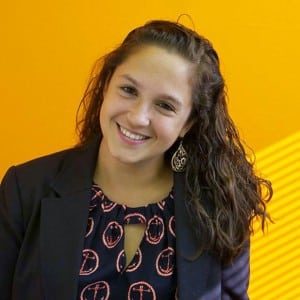
Home » Demand for sustainable homes growing but more awareness needed, officials say
Demand for sustainable homes growing but more awareness needed, officials say

April 13, 2017
270 eco-friendly homes certified in Tri-Cities last year compared to 1,000 in Seattle
The owner of Easton Construction’s model home in the Inspiration Estates neighborhood in Kennewick looks like most custom-built homes — a wide and open interior floor plan bringing together the living room, dining room and kitchen with white cabinets and white quartz.
[blockquote quote="The Built Green program has been somewhat of a niche in the Tri-Cities so far." source="Jonathan Jones, director of building science at HBA" align="right" max_width="300px"]
It’s airy, spacious and elegant, but what sets it apart from other custom builders’ homes is the importance owner Dan Easton places on eco-friendly, sustainable design and energy-efficient home features.
When people walk through the home, they’ll see signs pointing out the energy-efficient features and sustainably-harvested building materials used in the home, such as a whole house Energy Recovery Ventilation (ERV) system, triple-glazed windows, on-demand hot water unit, LED lights, touchless faucets, rigid foam insulation, engineered wood and paints with no volatile organic compound (VOCs).
His homes also are built as solar-ready in case homeowners want to install solar panels in the future.
“I try to build a home that gives a person the ability to live comfortably, age in place in the home. These are very healthy homes,” Easton said.
He builds all of his homes this way – and he is seeing increased interest and more awareness from potential home buyers for eco-friendly homes.
“It’s not rocket science what we’re doing here; it’s a system, I look at the shell of the home as necessary to creating a home with its own ecosystem inside the home. We take a lot of time in sealing the home. We’re using a little more resources to create the insulation but we’re significantly reducing the amount or energy and resources the home will require to operate,” he said.
HBA’s Built Green program
Through the Home Builders Association of Tri-Cities’ Built Green program, Jonathan Jones, director of building science, has a platform for advocating the benefits — and cost feasibility — of building energy-efficient homes. Although he does see increased awareness about the importance of building sustainably and with energy efficiency in mind, sometimes that does not translate to a noticeable uptick in more green homes being built, at least not locally.
Nationally, however, the trend seems to be a little different.
According to a 2014 study by McGraw Hill Construction Research, green, single-family homes will represent about 40 percent of the housing market by 2018, and 84 percent of residential homes will have sustainable, or “green” features.
Jones, a former independent consultant, has been in the green building business for about eight years and joined the HBA more than nine months ago. He consults with local builders to achieve the necessary improvements required to achieve Energy Star and Built Green certifications.
In 2009, he designed a net-zero home in Pasco. Net-zero homes produce as much energy as they consume. He is also certified as a home energy rater and verifier by RESNET, or Residential Energy Services Network.
“The Built Green program has been somewhat of a niche in the Tri-Cities so far. Some builders advocate to building exclusively to the Built Green standards, but some choose not use the program at all,” Jones said. “Sometimes to certify an environmentally-friendly home is a nominal amount compared to the cost of the home.”
Educating consumers
It also comes down to consumer awareness and communication between the buyer and builder. Most first-time buyers don’t know what to ask for when it comes to green building and energy efficiency, so they don’t ask, Jones said.
Built Green and Energy Star are two voluntary third-party programs guaranteeing the sustainability and energy efficiency of a home. The Department of Energy’s Challenge Home certifies builders who follow guidelines to build homes that are so energy efficient they can offset all or more of their annual energy consumption. Another independent certifier is LEED, or Leadership in Energy and Environmental Design.
“A lot of my builders come to me and say, ‘Well, my homeowners are not asking for those things,’” Jones said. “But surveys show that the younger generation and aging population are both interested in energy efficiency. They are seeking that consistency in price and affordability. They have an expectation that it should be included in their home.”
“There is an increased cost for high performance housing but case study after case study has shown that there are two costs involved with buying a home: the purchase price and the operating cost,” Jones said. “An educated buyer will look at the long-term savings versus the initial sticker shock.”
Last year, Built Green certified 270 homes in the Tri-Cities, compared to about 1,000 homes in Seattle.
Home builders like New Tradition Homes, Green Plan Construction, Easton Construction, Septan Homes, Habitat for Humanity and Alderbrook Homes are using Built Green standards.
To certify a Built Green home, the home has to pass an inspection and meet certain criteria, such as being energy efficient, meeting health and indoor air quality standards, using materials efficiently and using low-impact development techniques.
To keep a Built Green license, the builder has to pay an annual fee of $150 and $50 per home inspection up to 20 homes. The rest are free.
One thing Jones usually looks for in eco-friendly homes is that they are built with products that contain no VOCs, which are often found in finishes, carpets, paints and glues used for laminates. For interior paints, Jones recommends using American Clay, or other earth plaster, which provides a non-toxic and environmentally-friendly alternative to traditional paints.
“You have to get products that have finishes or construction materials low in VOCs. The fume you smell off the paint is one of them — even the new car smell are added chemicals, such as formaldehyde,” Jones said.
He suggested looking at the packaging of products to see if they’ve met standards.
Jones said builders should avoid using medium density fiberboard for trim work and base boards as those often contain formaldehyde. He also said some builders have the option of using ethically-sourced building materials or renewable resources like bamboo, cork or hemp, or using sustainably-harvested hardwood floors that lessen the impact to the environment and are much healthier for the home.
“We’re also looking for carbon offset. The longer life cycle of the product the better. There are also products and building materials that will offset the CO2 during construction of the home,” Jones said.
Eco-friendly structural design is also something homebuilders should look at. A home with less square footage on exterior walls is easier to ventilate and minimizes workload on a heating and cooling system.
For more information on HBA’s Built Green program visit hbatc.com/for-members/built-green.html.
Local News Environment
KEYWORDS april 2017





